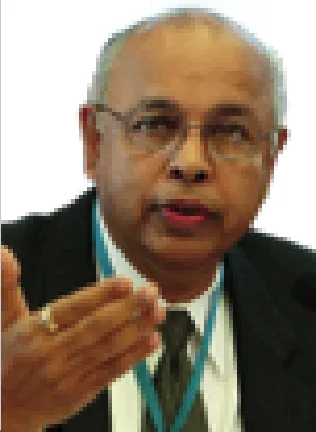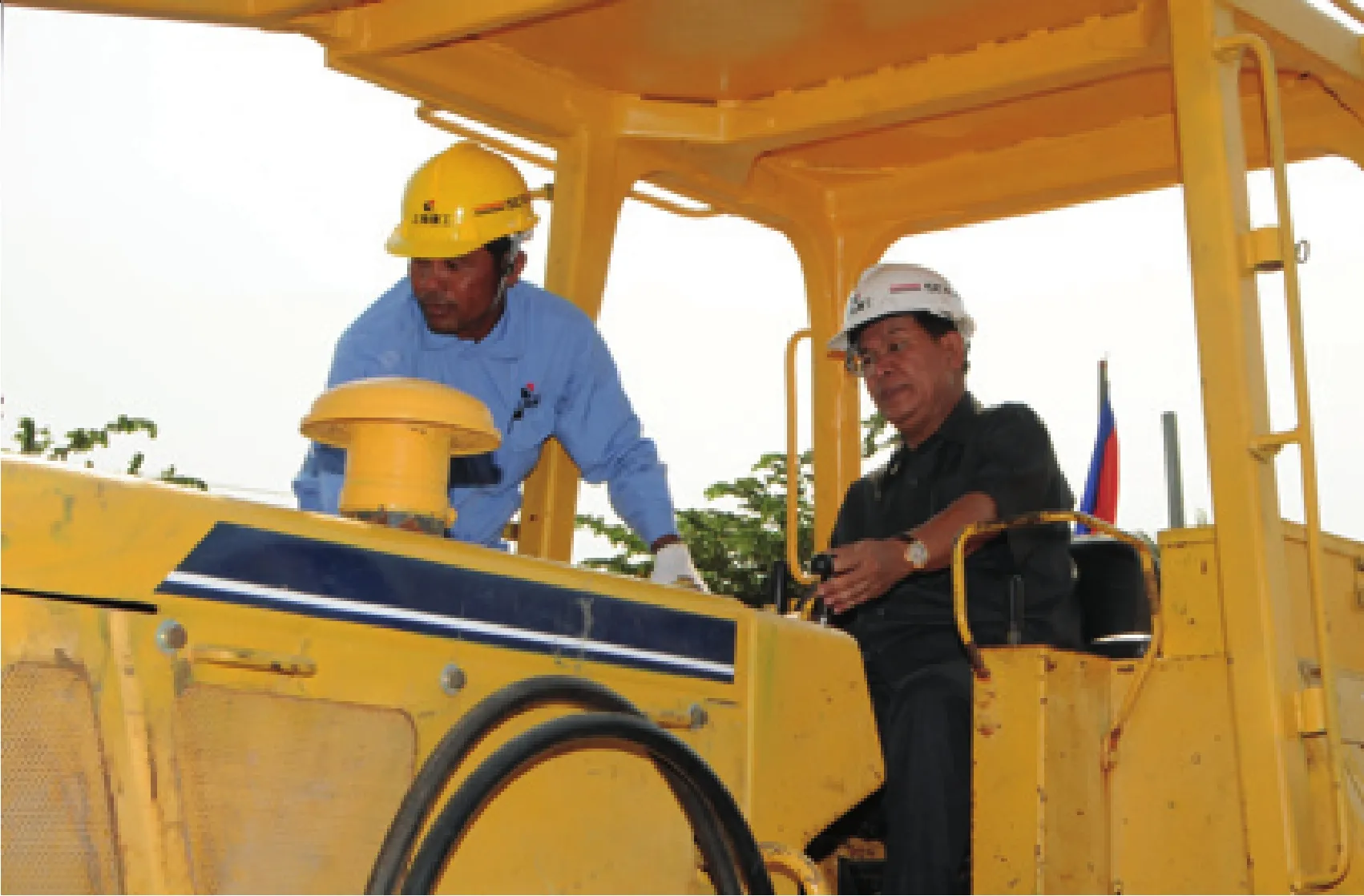Asia-Pacific Remains The Anchor
Asia-Pacific Remains The Anchor

Amitava Mukherjee
The Asia-Pacific region now faces another year of slowing growth, but the region will remain the anchor of global economic stability, said a UN Economic and Social Commission for Asia and the Pacific (ESCAP) survey released in May. In a recent interview withBeijing Review, Amitava Mukherjee, a senior expert of ESCAP’s Macro Economic Policy Development Division, shared his views on regional economic and social development. Excerpts follow:
Beijing Review: The ESCAP report says the V-shaped recovery in 2010 was shortlived as the world economy entered a second stage of the fi nancial crisis in 2011.What are the future trends?
Amitava Mukherjee: The deceleration is not as sharp as it was in 2008 and 2009. The recovery has also not been as sharp as we have seen. There will be a gradual recovery. If we look at 2007-08, it was a sharp downturn. Then from 2009,there was a sharp upturn. In 2010, it came down slowly and it is also growing up slowly. Instead of a V-shape, it is more like a U-shape.
Despite challenges and uncertainties,ESCAP still considers the Asia-Paci fi c region as the anchor of stability and growth for the world economy. Why?
Look at the global stage—Europe is in crisis and the American economy is stagnating.They were the two major drivers which generated the growth of the world economy.Then compare that with the Asian economies.The two major economies of Asia, China and India, are growing fastest. And these two have potential to grow. They have hit the bottom,so now China and India will rise. In spite of what difficulties they had, they are going to signi fi cantly increase.
According to the recently released ESCAP survey, China is supposed to grow 8.6 percent;India is supposed to grow 7.5 percent; Indonesia will grow 6.5 percent; Viet Nam will grow 5.8 percent; and Uzbekistan will grow 8 percent. All the countries have positive growth rates. When Europe is in trouble and is not growing and the United States is not growing, the recovery can only come from these countries, driven by the Chinese growth and the Indian growth.
Against the backdrop of the lingering global economic downturn, how will the UN promote anti-poverty efforts in developing countries in the Asia-Paci fi c?
The UN has different ways of promoting antipoverty efforts. For instance, ESCAP operates through analytical studies and provides technical advice. Then we have UN agencies which have direct projects in developing countries.
The UN has a major role in Myanmar where we are trying to help the country overcome poverty. We have a signi fi cant project in North Korea. Very few agencies have direct intervention there. We create models which countries and governments can adopt or follow. The UN and ESCAP have established a system that helps countries to form policies and develop institutions that are anti-poverty.
The UN has played a significant role in restoring democracy in Myanmar. In a democratic country, there is political incentive to reduce poverty because the leaders have to go back to the people for votes. Reducing poverty is not only good economics but also good politics. So, these are ways through policies,structures and institutions that ESCAP tries to promote anti-poverty programs despite the fact that growth is going down.
I should also mention economic growth is going down but it is not negative. There is a cake to distribute. Maybe the cake is not growing as fast, but the cake is still there. Because of this growth, countries are able to provide efficient development assistance. For instance, China provides a lot of assistance to Myanmar, Laos,Cambodia and Mongolia. India provides a lot of assistance to Nepal and Bhutan.
The Earth Summit will be held next month in Brazil with a focus on green economy and sustainable development. How can the Asia-Paci fi c region contribute to these goals?
I would like to highlight certain things which are not usually highlighted. One of the best ways that the Asia-Pacific region can contribute to green economy and sustainable development is to control population. Rapidly rising population is inimical to sustainable development. If you have too many people to feed, there are more dif fi culties. More people mean more demand on natural resources, more demand on fi nancial resources, more demand on institutional resources and more demand on physical resources. In countries like India and Bangladesh, their fertility rates are high.Population growth in Pakistan is also high.
The second thing to do is to reduce poverty. Poor people are forced to encroach on marginal lands. They are forced to encroach on marginal bodies of water. They are forced to use up the natural microenvironment. They have no options. It is a matter of life and death. If we reduce poverty, we will significantly contribute to sustainable development.Then poor people will not make a demand on marginal resources, marginal land and marginal bodies of water.

AID FOR DEVELOPMENT:Cambodian Prime Minister Hun Sen (right) drives a bulldozer at the groundbreaking ceremony of a road expansion project funded with a soft loan from China on the outskirts of Phnom Penh on February 14
The third significant contribution is promoting technologies that are less polluting.We not only need to develop technologies that are less polluting but also need to find out reasonable ways that the technologies are transferred to developing countries that cannot afford high-cost technologies. One of the signi fi cant ways we can manage sustainable development is to manage urbanization.Urbanization is high in the Asia-Pacific region. A lot of people are moving to urban sectors. If we do not have an orderly urbanization, we will see pollution, greenhouse gas emissions and bad waste management.
What implications do you think the ongoing shift of China’s economic development pattern will have for the Asia-Pacific region and beyond?
There are two aspects. One is China’s development pattern promotes intra-regional trade that will bene fi t a lot of countries in the Asia-Paci fi c. China is already doing it well. China is restructuring its economy to be based on domestic demand.
Secondly, by restructuring its economy,China can grow faster. China can contribute significantly to the development of other smaller countries that are dependent on China. For instance, it can have more of fi cial development assistance for Laos, Cambodia and Mongolia. The ongoing shift of China’s economic development pattern will have a signi fi cant impact on these countries.
It will also have a significant impact on other countries. If China produces more goods and services, China’s external demand will be reduced. It can meet more self-needs from domestic production. If it produces most of the things it uses domestically, international demand for those goods and services will come down. If Chinese demand comes down, the international prices will come down. That has a very signi fi cant implication for the world.
Can you tell us how decisions are made at ESCAP and how its policies have affected the Asia-Paci fi c region?
The decisions of ESCAP are made in a democratic manner. There is an Advisory Committee of Permanent Representatives.Each country in the region has a permanent representative in ESCAP. They advise the UN under secretary general for ESCAP on what to do, how to do it and what not to do.That is one decision-making body. Then, we have committees. The committees deal with issues, such as poverty, statistics and trade and investment. They help the under secretary general decide which areas ESCAP should work on. And there are commission sessions by ministers and prime ministers. They come and debate on different issues and come to conclusions on what to do or what not to do.
For instance, UN Under Secretary General and ESCAP Executive Secretary Noeleen Heyze is proactive in going into Myanmar and trying to influence them. I don’t say ESCAP alone has been in charge of changing Myanmar, but it has been a significant player in the process. ESCAP established the Asian Development Bank in the 1960s. It also developed the Asian Highway network and the Trans-Asian Railway network. More significantly, we have tried to standardize the road systems and help the developing countries to update
their transportation systems.
Survey Highlights
● Asia-Paci fi c to remain a global growth engine
● Policy challenges and options, including managing the balance between growth and in fl ation, coping with capital fl ows and addressing jobless growth and unemployment by encouraging domestic consumption
● Southeast Asia growth improves in 2012 as Thailand sees strong post- fl ood recovery
● Learning to live with high commodity prices
● Making growth inclusive
(Source:Economic and Social Survey of Asia and the Paci fi c 2012: Pursuing Shared Prosperity in an Era of Turbulence and High Commodity Prices)

